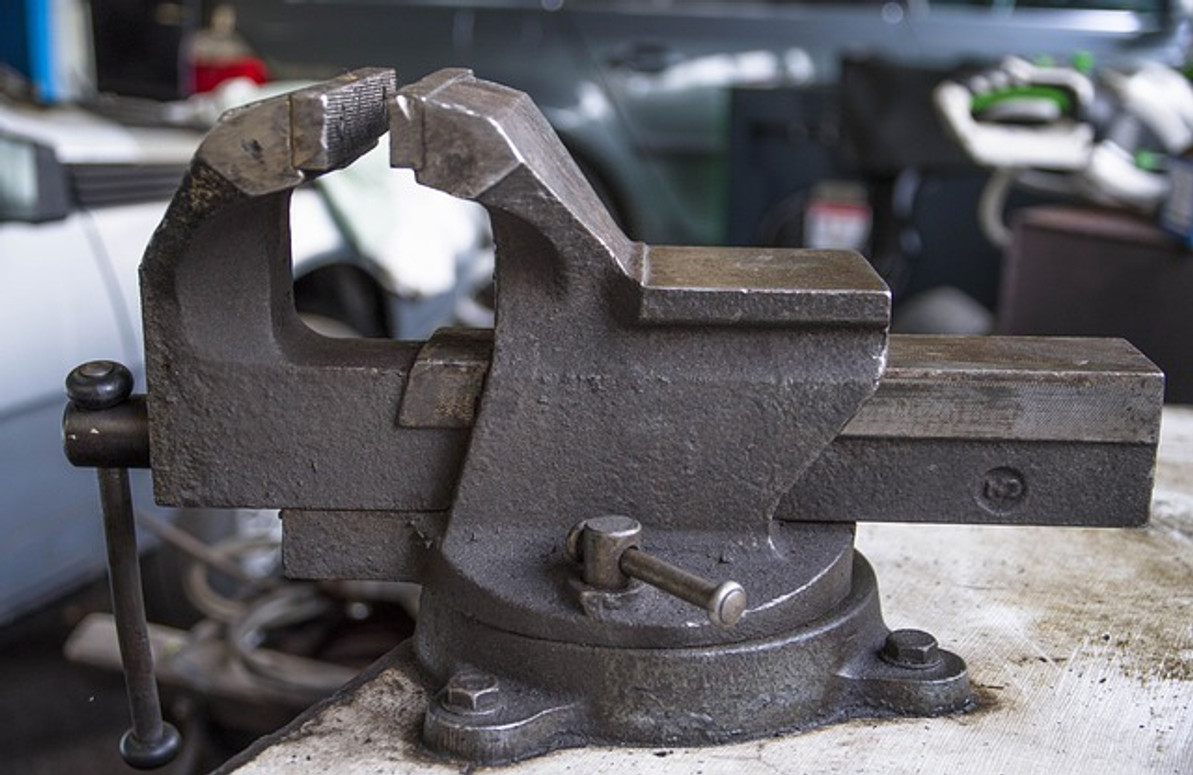5 Safety Tips to Follow When Using a Vise
Vises are commonly used in the workplace to hold materials and objects in place. As you may know, they consist of a pair of jaws. One of the jaws is stationary, whereas the other jaw is moveable. You can place materials or an object between the jaws, followed by turning a lever. Turning the lever will move the adjustable jaw towards the stationary jaw, thus acting like a clamp. If your job requires the use of a vise, you should consider the five following safety tips to protect against injury.
#1) Mount With Fasteners
Never use a vise unless it's mounted to a fixed and stable surface with the appropriate fasteners. Most vises are designed to be mounted on a workbench. They feature an arrangement of threaded holes at the bottom. You can mount a vise to a workbench by running fasteners through these threaded holes and into the workbench. Once mounted, the vise shouldn't move.
#2) Wear Safety Glasses
You should wear safety glasses when using a vise. The U.S. Bureau of Labor Statistics (BLS) reports that over 20,000 workers sustain an eye injury each year. The powerful clamping action of a vise can create shrapnel that shoots out from between the jaws. By wearing safety glasses, you can rest assured knowing that your eyes will be protected from this shrapnel.
#3) Inspect for Damage
Before using a vise, take a few minutes to inspect it for damage. While there are different types of vises, most of them are made of heavy-duty metal, such as stainless steel. Stainless steel, of course, can crack over time. The more you use a vise, the greater the risk of it cracking. If you notice any cracks in your vise, don't use it. Using a cracked or otherwise damaged vise could result in bodily injury.
#4) Oil Regularly
Don't forget to oil the vise regularly. Vises contain many different moving parts. One of the jaws will move, for instance, and the lever will also move. When parts such as these move, they'll create friction. Over time, all of this friction can degrade the vise to the point where it's no longer able to safely hold and clamp objects. You can prevent this from happening by oiling the vise regularly. Applying a lubricating oil to the vise's moving parts will reduce friction while simultaneously protecting the vise from premature failure.
#5) Avoid Overclamping
Another safety tip to follow when using a vise is to avoid overclamping. Overclamping refers to the use of too much pressure or clamping force. Vises are undoutedbly powerful. Overlcamping, though, can break the materials or objects between the jaws, which can lead to injury.
Recent Posts
-
Fire Safety in the Workplace: What You Need to Know
What steps are you taking to prevent fires in your workplace? According to the U.S. Occupational Saf …Aug 23rd 2023 -
Is It Safe to Go Jogging With a Cold Infection?
If you're suffering from a cold infection, you might be wondering whether it's safe to go jogging. T …Aug 22nd 2023 -
5 Safety Tips to Follow When Using a Powder-Actuated Tool
Powder-actuated tools are commonly used to join materials to steel and concrete. Also known as Hilti …Aug 20th 2023




